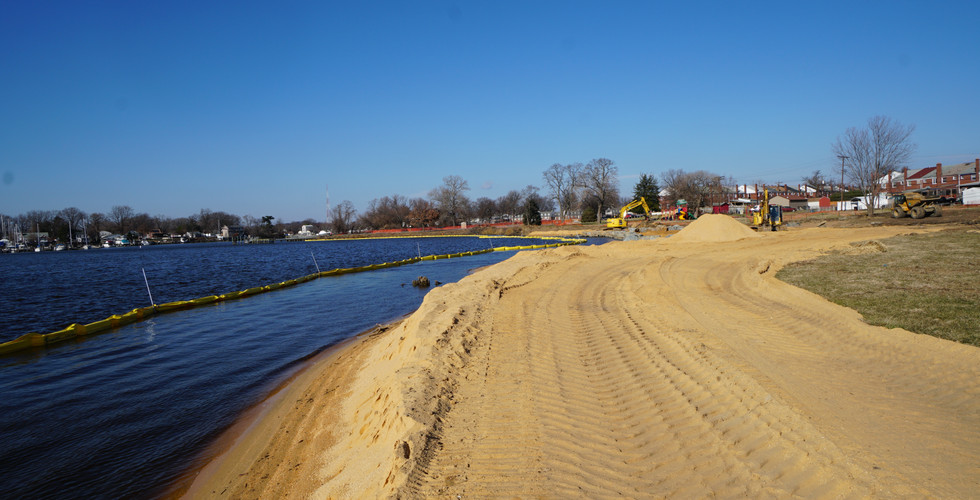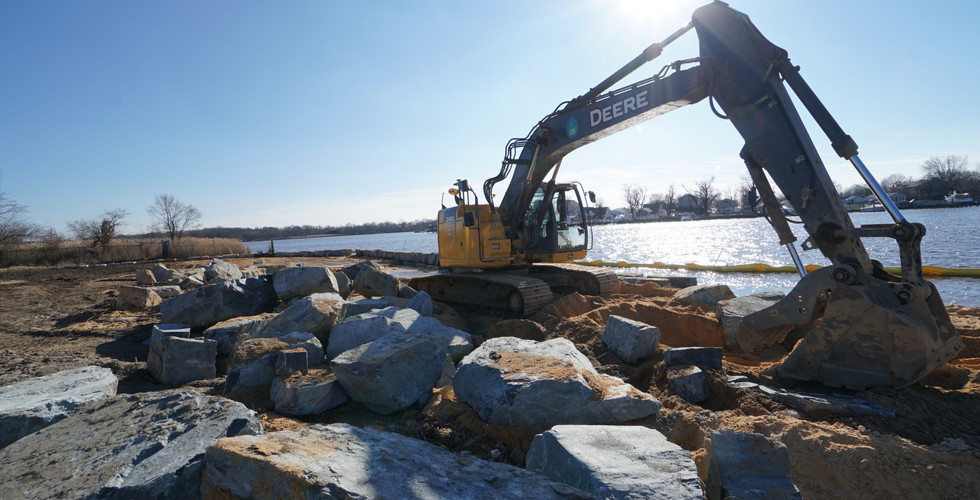Living Shoreline at Inverness Park
- Watershed Moments
- Jan 12, 2018
- 2 min read
Inverness Park is a 10-acre park in Baltimore County located along Lynch Cove in Bear Creek in the West Inverness Community of Dundalk, MD. The park consists of baseball diamonds, playground equipment, and a boat ramp that is accessible to the local community.

The park’s location in the community has led to the shoreline getting heavily eroded. EQR was contracted by the Baltimore County Department of Environmental Protection and Sustainability to restore approximately 1,300 feet of eroding shoreline. Restoration began with the treatment (over several seasons) and ultimate removal of Phragmites, and invasive species prevalent along shorelines and wetlands across the state of Maryland. Phragmites is an especially prevalent disperser, especially in saturated soils. Therefore, in order to mitigate the spread of this invasive to usable parkland, EQR’s first order of business on the project was to excavate and remove all stalks and rhizomes of the plant.
Hydraulic action, and the consequent erosive properties, of the tides poses a threat to the longevity of the park and overall water quality of the area. To reduce nutrient loading into the Chesapeake Bay and improve water clarity, imbricated boulder sills are being built along the shore to stave off erosion and provide stabilization. Throughout the length of the sills, notches are placed at Mean High Tide elevation to allow tidal ingress and egress, while still maintaining the structural integrity of the shoreline. The notches within the wetland sill ultimately provide sufficient conditions to foster the growth of wetland plants which are to be planted in the area between the newly constructed sill and existing shoreline. This area is being filled with clean sand which will supplement the ecological uplift by improving tidal habitat.
Past living shoreline projects have called for placement of rip rap in a pyramidal form and shaping to conform to grading tolerances. At Inverness, the use of imbricated boulders to construct the sill requires significant technique and equipment skill. The existing sand layer beneath the wetland sill is thin in many locations, with a limited bearing capacity. Therefore, caution must be exercised to avoid puncturing this layer.
EQR is using GPS equipped machinery to construct this project. Being that work is performed within an active cove, “in the wet”, GPS was pursued to allow work to continue through all tidal events. Since the park and consequent boat ramp are pillars of the surrounding community, work is being performed in a manner that still allows usage of these amenities.
Contact EQR:
As environmental construction experts for over 26 years, Environmental Quality Resources is proud of our mission of working outdoors to preserve and protect our watershed in a positive way. Visit us online or give us a call at (410) -923-8680 to get more information and see if we are what you’re looking for. Looking to see what we are currently working on and more about our company? Follow us on Facebook, Instagram, LinkedIn, Twitter, and YouTube!




















Comments